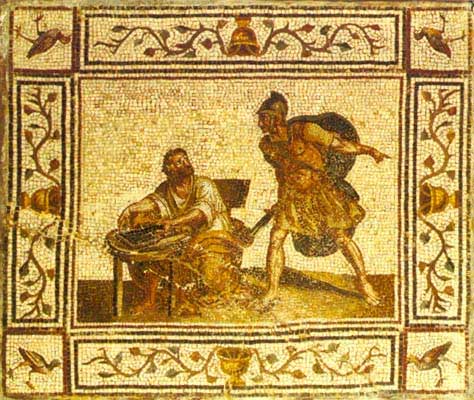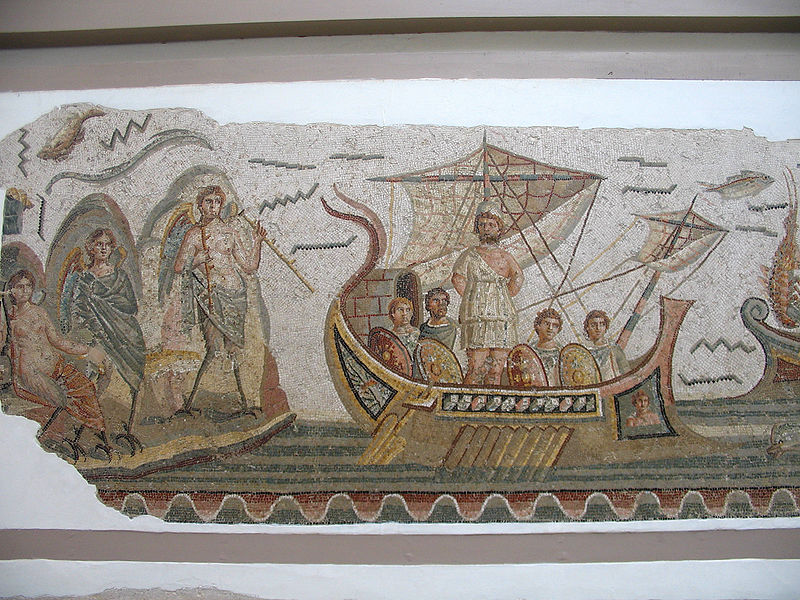
- •Unit 11 Mosaic
- •T2 Learn to pronounce the proper names.
- •Ivory (2) stones to inlay intarsia shell(2) enamel shell smalt decorative and monumental art splendid quaint tile
- •Ask ten questions of different types to the text as a plan for the retelling. Retell the text.
- •Study the following idioms.
- •Complete the sentences with the idioms using them in the correct
- •Make up your own sentences using these idioms as many as you
- •Fill in the gaps with Past Simple or Past Continuous.
- •Translate the sentences paying attention to the verb forms.
- •Put the verbs in brackets into Past Simple, Past Continuous, Past Perfect or Past Perfect Continuous.
- •T3 Study the following words and memorize them.
- •Look at the advertizing leaflets. Read about the services they provide.
- •Do you know how to write a letter of application? If not study the following recommendations.
- •Below you will find details from Fiona Larson’s letter of application. Look at the outline of the letter on the left and indicate where the information below should go.
- •You are going to read the letter of enquiry. Here some recommendations for writing the Letter of Enquiry. Study the plan.
Unit 11 Mosaic
Лексический материал:
История возникновения мозаики
Виды мозаики (смальта, керамическая, каменная, металлическая, деревянная мозаика)
Маркетри, интарсия, инкрустация
Грамматический материал:
Повторение времен Perfect, Perfect Continuous

Do you know when mosaic was invented?
When did it first appear in Russia?
What kinds of mosaic are used in modern design?

 T1.
Learn to pronounce the new words and learn them by heart.
T1.
Learn to pronounce the new words and learn them by heart.
inlay[‘inlei]1) инкрустация; мозаика, мозаичная работа
2)инкрустировать; покрывать мозаикой
mother-of-pearl [ʹmʌðǝ ǝv ʹpǝ:l] перламутровый
assemblage [ǝʹsemblɪdʒ ] 1) сбор, собирание 2) скопление 3) коллаж
tessera [ʹtesǝrǝ ] 1) а) кубик (в мозаике)
peristyle [ ʹperistaɪl] -перистиль
stone [stǝun] - камень
shell[ʃel]- раковина (моллюсков)
ivory [ʹaɪv(ǝ)rɪ]- слоновая кость (как тип костного образования)
excavation[͵ekskǝʹveɪʃ(ǝ)n])- раскопки
glazed tile[ʹgleɪzd taɪl]- кафельная плитка; изразец
enriched [ɪnʹrɪtʃt]- украшенный
dwelling [ʹdwelɪŋ] 1) жилище, (жилой) дом, жилье, жилое помещение
splendid [ʹsplendɪd]- великолепный
thermae [ʹθǝ:mɪ]- термы (античные общественные бани в Древней
Греции и Древнем Риме)
tile[ʹtaɪl]- изразец, черепица, плитка
quaint [ʹkweɪnt ]- необычный и привлекательный, старомодный и
изящный
intarsia[ɪnʹta:sɪǝ]- интарсия, деревянная мозаика
smalt [ʹsmo:lt] 1) смальта (непрозрачное цветное стекло для мозаичных
работ) 2) темно-синий цвет
enamel [ɪʹnæmǝl ] 1. 1) а) эмаль; финифть б) глазурь 2. 1) а) покрывать
эмалью, глазурью; эмалировать ; б) расписывать финифть в)
раскрашивать поверхность в разные цвета
T2 Learn to pronounce the proper names.
Ubaid [ʹju:beɪd]
Mesopotamia [͵mesǝpǝʹteɪmɪǝ]
Susa[ʹsu:zǝ]
Sassanid Empire [‘sæsǝnɪd empaɪǝ]
Roman [‘rǝumǝn]
Macedonian [͵mæsɪ’dǝunɪǝn]
Aegae [‘ægǝ]
Hellenistic [ ͵helɪ’nɪstɪk]
Carthage [‘ka:θɪdʒ]
Bardo[‘ba:dǝu]
Tunis[‘tju:nɪs]
Tunisia [tju: ‘nɪzɪǝ]
Sicily [‘sɪsɪlɪ]
Maximian[‘mæksɪmɪǝn]
Hercules[‘hǝ:kju:li:z]
UNESCO -United Nations Educational, Scientific and Cultural Organization
C
Ivory (2) stones to inlay intarsia shell(2) enamel shell smalt decorative and monumental art splendid quaint tile
omplete the sentences with the words from the box in the correct form.
1. The doors in that castle …with mother-of-pearl. 2. The earrings were decorated with the … of blue and yellow hues. 3. My collection of Chinese … is perfect, some pieces are rare enough.4. Mosaic is a … in various genres. 5. Mosaic can be made of colored …, glazes, ceramic tiles and other materials. 6. The fireplace was paved with quaint Dutch… . 7. …articles of furniture in the exposition dated back to the 18th century. 8. We saw … patterns of mosaic. 9. Roman mosaic was made of small cubes of very dense glass called … . 10. Traditional glass mosaic or patchwork is made of … . 11. … is shaped image patterns of the plates of wood, varying in texture, color, crashed into a wooden surface.12. When I went to the Mediterranean, I saw a lot of … on the seabed. 13. We bought a very beautiful necklace and a bracelet made of … .
Translate into English.
1. Двери выложены мозаикой из перламутра. 2. Камин, выложенный старинными голландскими изразцами был великолепен. 3. Старинная и изящная мебель напоминала о прежних временах. 4. Интарсия –это вид мозаики из дерева разной текстуры. 5. Металлическая мозаика может быть выполнена из золота или стали. 6. Каменная мозаика выполняется из различных видов камня, варьирующегося от туфа до мрамора, оникса и яшмы. 7. Керамическая мозаика выглядит как обычная плитка квадратной или прямоугольной формы, только меньше по размеру. 8. Мозаика - это разновидность живописи, в которой изображения набираются из разноцветных камней, смальты, керамических плиток и т. д. 9. Художественные возможности мозаики безграничны: она позволяет создать декоративное изображение от простого рисунка (узора, ковра, растяжки, одиночного элемента отделки для создания акцента в интерьере) до сложной композиции и произведения живописи. 10. Стеклянная мозаика, кроме того, незаменима для облицовки высокотехнологичных объектов: бассейнов, прудов, водопадов, фонтанов, ванных, кухонь, саун, каминов, фасадов зданий.
A. Doors lined with a mosaic of mother of pearl. Two. Fireplace, lined with ancient Dutchtiles was great. Three. Antique and elegant furniture is reminiscent of times past. 4.Intarsia is a form of a mosaic of different wood textures. Five. Metal mosaics can be made of gold or steel. 6. Stone mosaic is made of different types of stone, ranging fromtuff to marble, onyx and jasper. 7. Ceramic mosaic tile looks like a typical square orrectangular in shape, only smaller. Eight. Mosaic - a kind of painting, in which imagesare drawn from the multi-colored stones, smalti, ceramic tile, etc. 9. Artistic possibilitiesare endless puzzle: it allows you to create a decorative image of a simple pattern(pattern of the carpet, stretching, finishing a single element to create an accent in the interior) to the complex compositions and works of art. 10. Glass mosaic, in addition, is indispensable for facing high-tech facilities: swimming pools, ponds, waterfalls, fountains, bathrooms, kitchens, saunas, fireplaces, facades of buildings.

e ad
the text and tell where the mosaic was found and used in ancient
times.
ad
the text and tell where the mosaic was found and used in ancient
times.
Roman
mosaic of Ulysses, from Carthage
in the Bardo Museum, Tunisia

E
Mosaics
of girls in bikinis at the Villa Romana
The mosaics of the Villa Romana in Sicily are the largest collection of late Roman mosaics in site in the world, and are protected as a UNESCO World Heritage Site. The large villa rustica, which was probably owned by Emperor Maximian, was built largely in the early 4th century. The mosaics were covered and protected for 700 years by a landslide that occurred in the 12th century. The most important pieces are the Circus Scene, the 64 m long Great Hunting Scene, the Little Hunt, the Labours of Hercules and the famous Bikini Girls, showing women exercising in modern-looking bikinis. The peristyle, the imperial apartments and the thermae were also decorated with ornamental and mythological mosaics.
